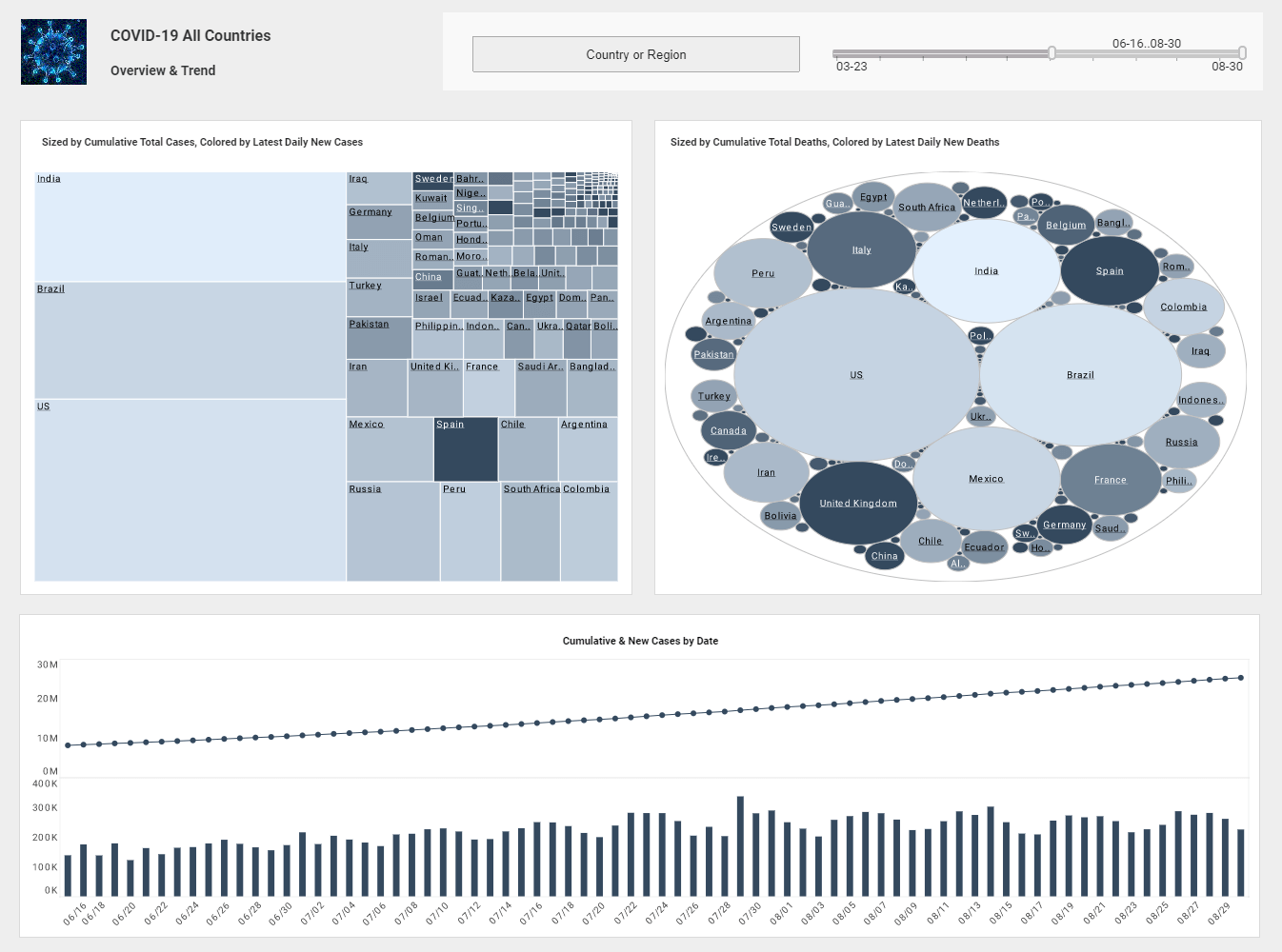InetSoft Webinar: A Flexible Data Access Framework
This is the continuation of the transcript of a Webinar hosted by InetSoft on the topic of "Why You Need Data Discovery Software." The speaker is Abhishek Gupta, Product Manager at InetSoft.
Speed really isn’t the essential element to realizing the value of the information and access to it. It’s key to remove those critical blind spots that lead to lack of timely information. So really what an IT organization needs to deploy is a simple, flexible, data access framework for getting at new sources of information and bringing them on board.
They need to able to do so in a way that frees them from the boundaries of the traditional date warehouse, things that are more either schema less or flexible schema platforms. Also it’s important to have simplified technology stacks, fewer moving parts, less pieces that need to be updated when you have to make changes. And ultimately all these elements combine to allow organizations to acquire new data sources and bring in new information in hours instead of days or weeks.
Look back at the legacy technology deployments. If you have make a change, they require you to adjust ETL processes and change your data warehouse schema, refresh your data mart or build a new data cube. They put you at a disadvantage. You’re weeks behind where you can be with agile BI and unified information access type of systems. The final point is building on the theme of unified information accesses, speed is very important, but it’s also important to bring that speed to the full breadth of data sources, unstructured and structured, as well.
| #1 Ranking: Read how InetSoft was rated #1 for user adoption in G2's user survey-based index | Read More |
So I say, don’t vilify IT. IT really can be the hero here. I think that’s absolutely true in this environment. I am thinking of a particular customer of ours who is a three hundred million dollar merchandising business. They were experiencing a 70% on time delivery to game stadiums all across the country. It’s a lot of stuff not delivered on time. The COO was really upset frustrated with the IT systems. IT came in and with a new BI system, and in six weeks they got the delivery metric up to 90%. Now the COO is a huge fan. He’s on record saying, I love these guys. They changed my business. Look at the difference between 70% on time ability to sell goods versus 90% on time. I have the ability to sell that much more product, and that’s because IT worked closely with the business and made a path, a fast path the information insight.
The fact that they did it in six weeks also had a huge psychological benefit. When people get fast insight, they think hey that was fast. That wasn’t too hard. I can do it again, and next time I want to do more and make it better. And so I think there is also that element of speed, of the fast path to information insight is not just all about the business benefits, but also the lingering benefits of the organization believing we can do this. We can be fast, and we can continue this pattern going forward. So the building the foundation for speed, I think is also a critical outcome and a benefit of fast systems. I can get you results quick.
Let’s move on to the next point here. So we looked at the faster deployment of self-service reporting. These are obviously all related. The next one is about deeper data analysis, the idea of discovery finding out what you don’t know, and seeing things from different perspectives.
 |
View live interactive examples in InetSoft's dashboard and visualization gallery. |
And this seems particularly important as we move out into organizations where the kind of data sources that were fine for business analysts may be working mostly in finance who are looking at the numbers. Now we are looking at decision making that needs to look at other kinds of data to really make intelligent decisions.
Discovery demands far more powerful data analysis capabilities, business big data, big data analysis for large data storage including social media and customer behavior, all these different sources out there. Then use technology properly whether it be automating or encapsulating ETL, using in memory analytics to move detailed data closer to the user. This whole area is a very exciting area. Lots of new things are happening.
There are two points I really wanted to talk about in regards to deep analysis. The first is how you get deep insight from unstructured information. The second is about establishing new paths of inquiry into the information you have. So, looking at unstructured data, the important aspect has been being able to perform analysis. With unstructured information you need the ability to derive structured metadata.
There are whole host of techniques for doing this that have typically fallen under the title of text analytics or data mining. And the idea is that you can use things some of these techniques that are taxonomy based, some that are rule based, some that are statically based such as any of the extractions. These could be sentiment analysis, automatic classification and any kind of a system or infrastructure or support that is getting insight from unstructured.
 |
View a 2-minute demonstration of InetSoft's easy, agile, and robust BI software. |
| Previous: Easy to Use BI Tools |
Next: Good Data Mining Tool
|


